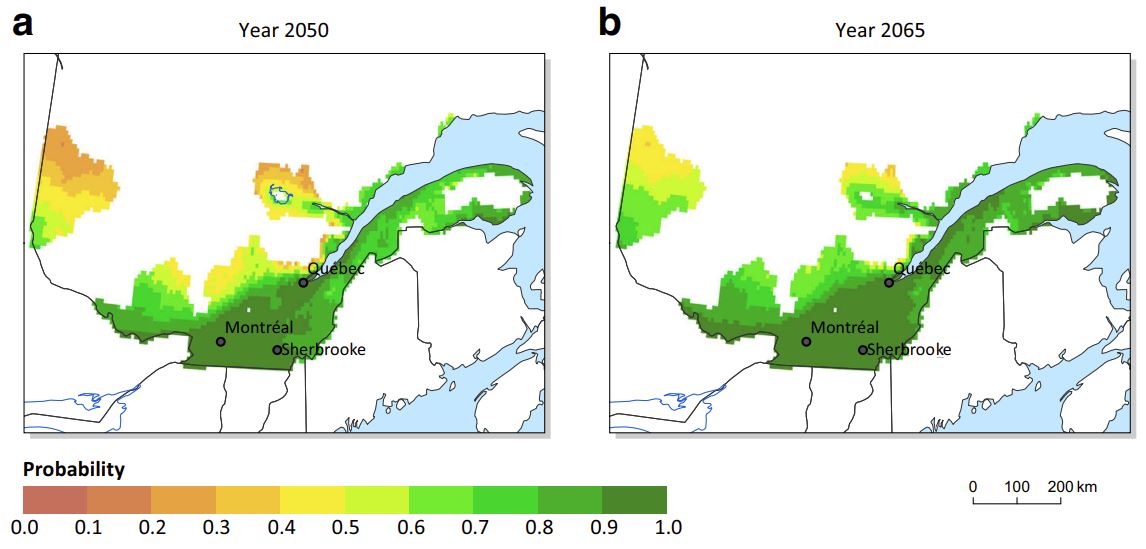Wine production potential in Quebec from 2020 to 2070
This project identified future climate trends in Quebec for the purpose of helping wine growers plan their grape variety choices. The results could influence future criteria for reserved designations, specifying the types of grape varieties and their possible geographical extent in the context of climate change.
Project details
Principal(s) investigator(s)


Context
Since its modest beginnings in the 1980s, Quebec’s wine industry has been growing rapidly and is now looking at its potential for future development. Due to climate change, this thriving industry could consider growing a much wider variety of grapes in the province of Quebec. What is the likelihood of producing a good Pinot Noir in Montérégie or the Eastern Townships? A longer growing season, increased accumulated heat and milder winter temperatures could provide a more favourable climate for wine production.
Objective(s)
-
To assess the likelihood of exceeding the thresholds required for growing Vitis vinifera varieties such as Pinot Noir, Gamay, Riesling and Chardonnay
To assess where and when new regions can expect to be able to grow hybrid grape varieties and estimate the time it will take to grow Vitis vinifera varieties
Methodology
-
Determination of the climate indicators specific to wine growing in Quebec through consultations with viticulture specialists
-
Development of climate scenarios through statistical adjustment of climate simulations from an observation product developed by Natural Resources Canada
-
Evaluation of the probabilities of exceeding prescribed thresholds of various climate indicators over time
-
Maps showing zones with the potential for viticulture and regions that will be able to grow Vitis vinifera varieties
Results

Figure 1 : Probability of having more than 1000 growing degree days, 156 consecutive frost-free days, a minimum winter temperature above -30°C and no more than 20 days with a temperature below -22°C for the year (a) 2050 and (b) 2065. A 10-year interval centred on the years 2050 and 2065 was used to calculate the temporal average probability for the years 2050 (2046-2055) and 2065 (2061-2070).
Benefits for adaptation
Benefits for adaptation
Some vineyards are already carrying out tests with grape varieties such as Chardonnay. This relatively young industry is eagerly awaiting the results of this project, in particular the quantification of the commercial risk established by means of a probabilistic method.
This will provide additional support to wine growers in their decision-making, as they will have information on the future climate available to them when planning grape variety choices. In addition, the results may influence the criteria for future reserved designations, specifying the types of grape varieties and their possible geographical extent in a changing climate.
Scientific publications
Other participants
-
Ministère de l'Agriculture, Pêcheries et Agroalimentaire (MAPAQ)
-
Agriculture et Agroalimentaire Canada (AAC)